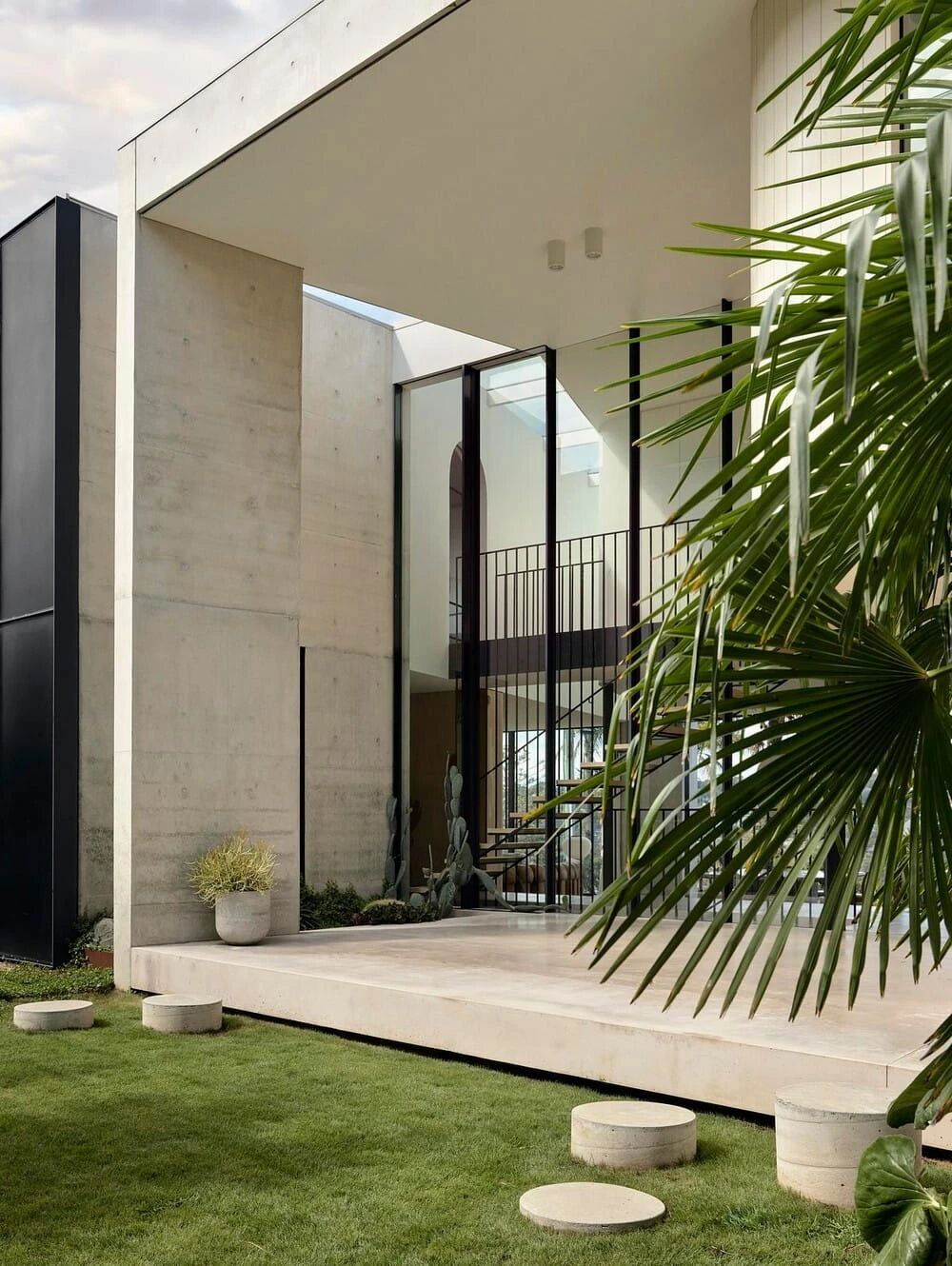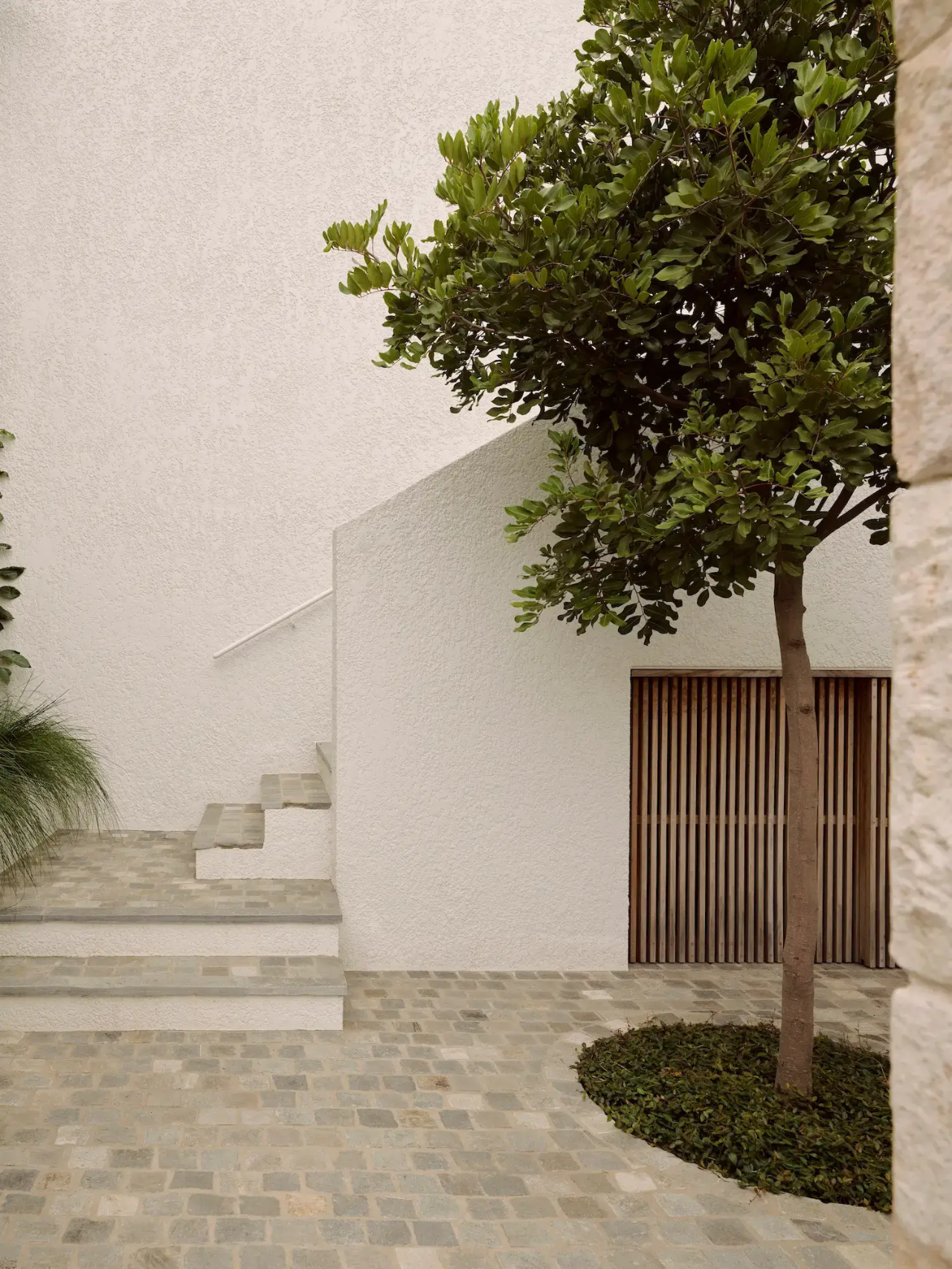Mario Botta and Koen Vanmechelen are behind Labiomista, a studio and biodiversity project
2019-03-15 14:33
In the main studio Vanmechelen’s works include (foreground, left to right) Testimonial, 2017, taxidermy crocodile, marble eggs; Under my skin, 2017, taxidermy chickens, silk, glass snakes; Evolution, 2017, taxidermy pig, neon, wooden base; The eggcord, 2012, glass, steel cable. beyond is the bird cage and kitchen. Photography: Jeroen Verrecht
There’s something afoot in the small town of Genk in eastern Belgium. On the site of a former coal mine, a long, dark brick building with a cage at its centre and a large greenhouse at its western end has appeared. It is elegant and unexpected, an enigmatic, provocative presence, calmly nestled among the lush greenery and sighing trees. Inside, one of Belgium’s most renowned artists, Koen Vanmechelen, has set up shop with a project that is part studio, part exhibition space and part research, biodiversity and breeding project.
比利时东部的Genk小镇上正在发生一些事情。在一座前煤矿的工地上,出现了一座长而黑的砖房,其中心是一个笼子,西端是一个大型温室。它是优雅和意想不到的,一个神秘的,挑衅性的存在,平静地依偎在郁郁葱葱的绿色植物和叹息的树木之间。在里面,比利时最著名的艺术家之一,Koen Vanmechelen,已经建立了一个项目,其中一部分是工作室,部分展览空间和部分研究,生物多样性和育种项目。
Labiomista, as it has been named, takes the conceptual artist’s work on chickens, cross-breeding and the creation of more diverse, resilient and fertile communities (such as his Cosmopolitan Chicken Project, or ‘CCP’, which began in 2000) to an exciting new level. When it opens to the public in May 2019, the 60-acre campus will bring together ‘culture and nature’ in a vast park where visitors will see chicken breeding stations first hand, or be able to observe ‘domesticated’ animals, including camels, dromedaries, ostriches, llamas, emus, nandus and alpacas roaming freely around the park from a landscaped network of walkways.
正如它所命名的那样,唇形门将概念艺术家的工作集中在鸡、跨育种和创造更多样、有弹性和可育的社区(如他的世界鸡项目,或“CCP”,从2000年开始)到一个令人兴奋的新水平。2019年5月向公众开放时,60英亩的校园将在一个广阔的公园里汇集“文化与自然”,在那里,游客将首先看到养鸡站,或者能够观察“驯化的”动物,包括骆驼、Dromedies、鸵鸟、Lallas、Emus、Nandus和AlPacas在公园周围从一个景观网络自由地漫游。
An amphitheatre will provide space for talks by artists and scientists, while sculptures and installations by Vanmechelen will be placed in dramatic spots across the site. A vast swathe of land to the north of the park will be left as found in its ‘wild’ state, and will eventually host a programme reintroducing wolves to the area, in collaboration with Belgium’s National Parks Department.
一个圆形剧场将为艺术家和科学家的演讲提供空间,而Vanmechelen的雕塑和装置将被放置在现场的戏剧性地点。公园北面的大片土地将保留在其“野生”状态,并最终将与比利时国家公园部门合作,举办一项将狼重新引入该地区的项目。
The greenhouse at Labiomista, in Genk, houses live birds and forms an installation, The Looking Glass. Photography: Jeroen Verrecht
在Genk,唇形科的温室,容纳活的鸟类,并形成了一种安装,看起来是玻璃。摄影:JeroenVerrecht
The 5,000 sq m, three floor structure, by Swiss architect Mario Botta, encompasses a studio, gallery space, meeting rooms, auditorium and bird cages. It is made of a simple, monochrome material and colour palette of concrete (some of it prefabricated off-site), dark local brick and glass, chosen to keep the budget down, and because, as Botta says, ‘the building is supposed to be a container, or factory, where the art is the bit that provides the colour’.
由瑞士建筑师马里奥·博塔(MarioBotta)设计,占地5000平方米,三层楼,包括一个工作室、画廊空间、会议室、礼堂和鸟笼。它是由一个简单的,单色材料和颜色的混凝土调色板(其中一些是在场外预制的),深色的当地砖块和玻璃制成的,选择的目的是降低预算,而且正如博塔所说,“建筑应该是一个容器,或工厂,在那里艺术是提供颜色的部分”。
Vanmechelen met Botta in 2013 at an inauguration party for a new office complex in Genk designed by the architect. The design process for Vanmechelen’s studio was highly collaborative, though Botta, smiling, says that the artist wanted to ‘go as big as possible’ whereas he was intent on trying to ‘reduce everything down’. Using volumes with niches at regular intervals, Botta was able to break up what could have been a ‘monotonous warehouse-style space’ into something more sophisticated, with varied lighting created by alternating full-height and diminutive upper factory- style windows. The niches also make useful work or display spaces. ‘Every now and again you need to control and compress the space around you,’ says Botta. ‘You need human dimensions, a more domestic scale.’
万梅伦在2013年在一个就职聚会上,在一个由建筑师设计的GENK新办公综合体的就职典礼上会见了装瓶公司。范梅伦工作室的设计过程是高度协作的,尽管瓶子A微笑着说,艺术家想要“尽可能的大”,而他的意图是试图“减少一切”。在一定的时间间隔使用带有壁龛的卷,瓶子能够打破原本可以成为“单调的仓库风格的空间”的东西,变成更复杂的东西,有各种各样的照明,由交替的全高和小的上工厂风格的窗户创造出来。“生态位”也创造了有用的工作或展示空间。“每一次,你都需要控制和压缩围绕着你的空间,”博塔说,“你需要人类的维度,更多的国内规模。”
The story of Labiomista’s inception is evidence of Vanmechelen’s drive and vision. Having had to leave his studio in a former factory in the compact, well-heeled and pretty neighbouring Flemish town of Hasselt to make way for new development, he realised he would rather be somewhere grittier and become part of its transformation. In Wim Dries, mayor of Genk, he found someone who saw how his work, focusing on mixing and cross-breeding, race and globalisation, had relevance for a town so influenced by migration. Genk may be small (population 66,000) but more than half of its inhabitants hail from an impressive 109 countries.
拉比奥米斯塔的故事证明了范梅凯伦的干劲和远见。为了给新的开发项目让路,他不得不离开位于紧凑型、富裕而漂亮的邻邦佛兰芒小镇哈塞尔特(Hasselt)一家前工厂的工作室,他意识到,他宁愿呆在更坚固的地方,成为改造的一部分。在Genk市长威姆·德里斯(WimDries)一案中,他找到了一个人,他看到了他专注于混合、杂交、种族和全球化的工作与一个如此受移民影响的小镇是如何相关的。Genk可能很小(人口66,000),但其一半以上的居民来自令人印象深刻的109个国家。
A circular concrete staircase at the building’s service end. Photography: Jeroen Verrecht
大楼服务处的圆形混凝土楼梯。摄影:Jeroen Verrecht
Though Dries initially offered Vanmechelen land on one of the city’s other former mines, which was already being transformed into a cultural district called C-Mine, Vanmechelen was clear he wanted to start from scratch. When the mayor suggested the most northerly of the mines instead, which had also been a private zoo in the 1970s and 1980s, Vanmechelen knew he had found something special in a unique town.
虽然最初在一个城市的其他以前的地雷上提供了万科海伦的土地,但它已经变成了一个叫做C-Mine的文化区,万梅伦很清楚他想从头开始。当市长提议最北方的地雷而不是上世纪70年代和80年代的私人动物园时,万梅伦知道他在一个独特的城镇找到了一些特殊的东西。
‘It’s because it’s in the middle of nowhere and on a wounded spot that this place is so interesting and that the story is so much stronger,’ he says. Genk’s wound is the same one that has afflicted many European cities for decades – that of deindustrialisation. Its three mines were closed between the 1960s and the late 1980s and, more recently, in 2014, the closure of the Ford plant meant the terrible and sudden loss of over 4,000 jobs.
他说:“这是因为它在任何地方都没有,在一个受伤的地方,这个地方很有趣,故事太强大了。”几十年来,Genk的伤口与许多欧洲城市的创伤是一样的,这就是去工业化。在20世纪60年代至20世纪80年代后期,它的三枚地雷被关闭,最近,在2014年,福特工厂的关闭意味着4000多个工作岗位的可怕和突然的损失。
Watching Vanmechelen and Botta communicate is interesting. They talk in French, in which neither is comfortable (though Botta more so), but their bond clearly transcends language. They laugh and point and draw pictures. Each of them privately tells me how the other is the real deal and ‘authentic’. Both artist and architect talk of the growing importance of a multi-disciplinary and less siloed approach in all areas of life. Vanmechelen regularly takes part in research projects and talks with human geneticists, sociologists, philosophers and biologists. ‘Normally these sorts of people never talk to each other because everybody has his own field, his own university, nobody is willing to share,’ he says.
看Vanmechen和Bottena的交流是很有趣的。他们用法语说,其中既不舒服,也不是很舒服(尽管瓶装水),但是他们的债券显然超越了语言。他们笑着点,画一幅画。他们中的每一个私下告诉我另一个是真正的交易和“真实的”。艺术家和建筑师都谈到了在所有生活领域中,多学科和更少孤立的方法日益重要的重要性。范梅伦经常参加研究项目,并与人类遗传学家、社会学家、哲学家和生物学家进行会谈。他说:“通常,这些人从不互相交谈,因为每个人都有自己的领域,他自己的大学,没有人愿意分享。”
Botta too speaks of the ‘cross-pollination and cross-contamination in the world today that is both a positive thing but speaks of its complexity’. He recently invited a neuroscientist for a talk at the architecture university he founded in Mendrisio in Switzerland and was asked what neuroscience had to do with architecture. ‘This neuroscientist has discovered the mirror neuron that deals with empathy and he spoke of conditions of space, light and atmosphere that foster empathy,’ he explains. ‘That has everything to do with architecture!’
博塔也谈到了“当今世界的异花授粉和交叉污染,这既是一件积极的事情,但也谈到了它的复杂性”。最近,他邀请了一位神经科学家到他在瑞士门德里西奥创立的建筑大学做演讲,并被问到神经科学与建筑有什么关系。他解释说:“这位神经科学家发现了处理移情的镜像神经元,他谈到了空间、光线和大气条件,这些条件促进了移情。”“这跟建筑有关!”
A view from Labiomista’s greenhouse end, with the Steller’s eagles’ cage in the distance, and concrete steps leading down from the conference, events and theatre area. Photography: Jeroen Verrecht
从拉比奥米斯塔的温室尽头望去,远处是斯特勒老鹰的笼子,还有从会议、活动和剧院区域走下的具体台阶。摄影:Jeroen Verrecht
Labiomista is still coming into being. A pointed arched triangular gateway at the south-west corner of the site – also designed by Botta – will be clad in the same black brick as the main building and house a ticket booth, a shop, toilets and other facilities. The greenhouse in the studio is now home to assorted fruit-eating birds, such as Victoria crowned pigeons, hornbills, toucans and turacos, but the big central cage is still awaiting its pair of Steller’s sea eagles from Siberia, due to arrive in March 2019 (creating a very Vanmechelen-style predator-versus-prey relationship between the two cages). On the open ground floor of the building, a number of Vanmechelen pieces will be installed, including an oversized marble Medusa, taxidermied chickens (only immortalised after they have died naturally) and two live red jungle fowl, the original chicken species, in a cage.
拉比奥米斯塔还在形成中。位于工地西南角的尖顶拱形三角通道-也是由博塔设计的-将与主楼一样,铺上黑色的砖块,容纳一个售票处、一家商店、一间厕所和其他设施。演播室里的温室里现在住着各种各样的吃水果的鸟,比如维多利亚冠鸽、犀鸟、巨嘴兽和斑羚,但大的中央笼子仍在等待着来自西伯利亚的两只斯泰勒海雕,它们将于2019年3月抵达(在这两座笼子之间形成了一种非常像范梅凯伦式的捕食者-食肉动物)。在这栋建筑的一楼,将安装一些范美赫伦(Vanmechelen)的碎片,包括一只超大的大理石美杜莎(Medusa),一只标本鸡(只有在它们自然死亡后才能永生)和两只活的红色丛林鸡(最初的鸡种)在一个笼子里。
Before leaving Genk, I visit Vanmechelen’s farm, run by his wife Inge, and located a few minutes away, directly behind his home. Many of the animals here are endangered and part of cross-breeding programmes with various international institutions designed to help reintroduce them into the wild.
在离开Genk之前,我参观了Vanmechelen的农场,由他的妻子Inge经营,几分钟后,就在他家的后面。这里的许多动物濒临灭绝,也是与各种国际机构的杂交计划的一部分,旨在帮助它们重新进入野外。
As we walk past enclosures full of different generations of cross-bred chickens, as well as pairs of owls, eagles, dromedaries and camels, it becomes clear just how embedded Vanmechelen is in this topic. ‘I don’t see the difference between living and working,’ he says at one point. Perhaps that’s because his work is about the very stuff of life: reproduction, fertility and the quest for survival. Labiomista brings his unique vision together in a handsome and unusual indoor-outdoor home. §
当我们走过满是几代杂交鸡的围场,以及一对猫头鹰、滴水沟和骆驼时,我们就明白了范梅凯伦在这个话题中是如何嵌入的。他一度说,我看不出生活和工作之间有什么区别。也许这是因为他的工作是关于生命的物质:繁殖,生育和对生存的追求。拉比奥米斯塔把他独特的视野集中在一个英俊而不寻常的室内户外住宅里。§
As originally featured in the October 2018 issue of Wallpaper* (W*235)
地面将充满Vanmechelen的艺术品。这里有一座大理石和石头雕塑,名为“创意记忆”(CreativeMemory,2017),里面有一个坐在人权百科全书上的孩子,与威尼斯人权学院的一件类似作品结对在一起。这里有一个大理石和石头雕塑,“创意记忆,2017”,里面有一个坐在人权百科全书上的孩子,和威尼斯人权学院的一个类似的作品结对。
Vanmechelen站在一口光井前,在茄子旁边,2012年,Vanmechelen站在一口光井前,站在脐带旁边。
连接拉比奥米斯塔两翼的桥段,横跨交通可以进入公园的一条道路,连接拉比奥米斯塔两翼的桥段,跨过一条交通可以进入公园的道路。
 举报
举报
别默默的看了,快登录帮我评论一下吧!:)
注册
登录
更多评论
相关文章
-

描边风设计中,最容易犯的8种问题分析
2018年走过了四分之一,LOGO设计趋势也清晰了LOGO设计
-

描边风设计中,最容易犯的8种问题分析
2018年走过了四分之一,LOGO设计趋势也清晰了LOGO设计
-

描边风设计中,最容易犯的8种问题分析
2018年走过了四分之一,LOGO设计趋势也清晰了LOGO设计
































